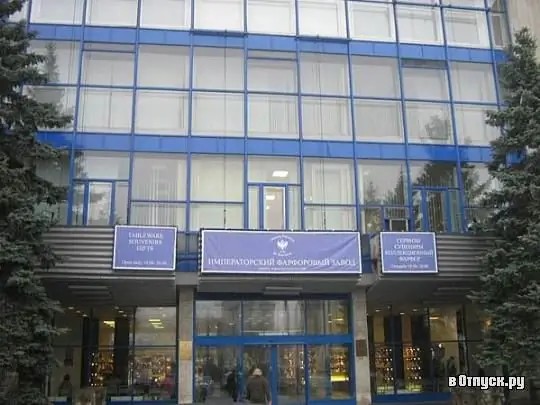
Description of the attraction
The production of St. Petersburg porcelain began two and a half centuries ago at the first domestic porcelain factory, which was founded by the highest order of Empress Elizabeth Petrovna in 1744.
In 1844 the Imperial Porcelain Factory, the oldest in Europe, celebrated its 100th anniversary. In honor of this anniversary, Emperor Nicholas I ordered the creation of a museum of Russian porcelain at the plant. The fact that the event will be interesting for the public was proved by several successful exhibitions and sales of samples of the plant's products held in 1837-1838.
The newly opened industrial and art museum was improved and developed in parallel with the development and improvement of the production of Russian porcelain. In the nineteenth century, the museum was housed on the first floor of an old factory building, which itself was an interesting example of industrial architecture.
To replenish the museum collection, especially interesting items made at the factory in the eighteenth and early nineteenth centuries were selected from the storerooms of the Winter Palace and other royal residences. Among them was a white experimental cup, made by the master Dmitry Ivanovich Vinogradov at the very beginning of his work on creating Russian porcelain. During the reign of Emperor Alexander III, there was a tradition of making works of authorship in two copies in order to transfer one of them to the museum funds. This is how the magnificent Rafaelevsky service appeared here, the most expensive and longest-time production project of the Imperial Factory. The ornament of the service repeats the frescoes of the Loggias in the Vatican, made by the great Raphael.
The museum became a school of craftsmanship for the factory's sculptors and artists, who had a unique opportunity to study the art of porcelain directly at the place of its production.
During the First World War, the museum was evacuated to Petrozavodsk, and an infirmary was organized in its premises. After the revolution, the porcelain museum, like the factory, often changed its location, as a result of which the exhibition space and the exposition itself were constantly decreasing. During the Great Patriotic War, the plant was shut down again, and the unique collection of porcelain was evacuated to the Urals.
And only in 1975 the museum was housed in the new administrative building of the Leningrad Porcelain Factory, which in 2005 was given its original name - "Imperial Porcelain Factory".
Since 2001, the collection of the Museum of the Porcelain Factory has been under the jurisdiction of the State Hermitage Museum. The factory collection, which was previously practically inaccessible to ordinary visitors, now looks like a modern museum, which is equipped with the latest museum technology. The museum funds include more than 30,000 items. Nowadays, in the showcases of two open halls, you can see more than 600 magnificent exhibits. Now it is planned to open the third hall, which will show the masterpieces of porcelain art of the 20th century.







